- Tofu, anyone?
- Plumcot, anyone?
- Guerrilla gardening, everyone!
- Green Revolution breadbasket drying up. ICRISAT has the answer. Well, sort of.
- BBC has a different answer. Trees can keep people alive in times of drought.
- More semi-naked chicks, this time in South Africa.
- Naked or otherwise, eat them to save them, with the American Livestock Breeds Conservancy.
Getting to the bottom of potato late blight resistance
There’s a bit of an argy-bargy developing in the comments to Robert’s provocative post Inorganic farming. Anastasia raised the question of transgenics for fungal resistance, which Robert echoed. Patrick then waded in bullishly to ask why transgenics were needed, when breeder Tom Wagner “has created quite a number of potato lines totally resistant to late blight”. And that created a clamour from Robert to the effect that he couldn’t find any evidence of Wagner’s success on this front.
Two points.
First, although Patrick was perhaps too modest to say so, he has arranged for Tom Wagner to be at a meeting in Oxford, England, as part of a Greater European Tour that Tom is undertaking in the autumn. So anyone who wants to know about his selections for late blight resistance can get it straight from the horse’s mouth. And report it here, please.
Secondly, don’t panic. Scientists at the University of Dundee in Scotland and elsewhere have discovered a single gene that, they say, is the key to blight resistance. “We are really excited by the discovery of RXLR. This has provided a signature to search for proteins that are delivered inside host cells, where they may be exposed to plant defence surveillance systems,” said Professor Paul Birch, the team leader. Clearly it won’t be long before the threat of late blight is a thing of the past.
Nibbles: Seed Conference, High carotenoid bananas, DIVA-GIS, Protected area map, Pulse domestication, Food policy, Torreya rewilding
- The 2nd World Seed Conference is coming up soon.
- Orange bananas make it big in the Solomon Islands. Thanks, Lois.
- DIVA-GIS website gets a makeover. Watch out for the blog.
- Global protected areas map mashed up.
- Dorian Fuller blogs lentil and bean domestication.
- Bookforum.com does food.
- While people discuss the pros and cons of assisted migration, one group has actually gone out and done it.
Thank you, Ames!
Just back from Heartland and, before the jetlag overpowers me, I really want to thank everyone at the North Central Regional Plant Introduction Station (NC7) in Ames, Iowa for their incredible hospitality over the past week. I know this will get to them because a couple of the people working at the station told me they visit us occasionally. Grateful for that too!
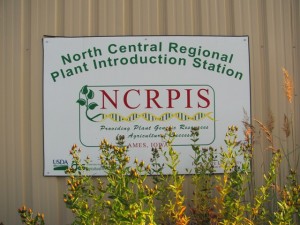
The ARS facility at Ames is the oldest of the US plant introduction stations. It’s main crop is maize, of which it has a collection of about 20,000 accessions from all over the world.
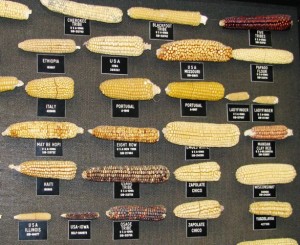
But there are also some 30,000 accessions of a bunch of other crops and wild species.
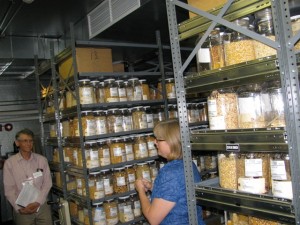
Many of the crops require careful management of pollinators during regeneration and multiplication. Fortunately, there hasn’t been any colony collapse disorder among the beehives used and maintained on the station.
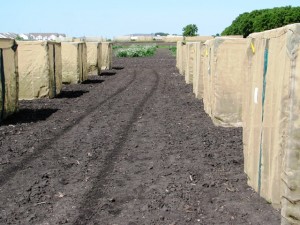
Like many of the active genebanks of the USDA National Plant Germplasm System, the one at Ames benefits from an almost symbiotic relationship with nearby Iowa State University, with some staff also having university duties and many students gaining hands-on experience in the genebank.
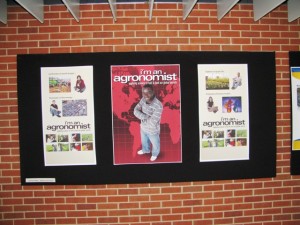
Also nearby is a fascinating prairie remnant, Doolittle Prairie, which houses about a dozen crop wild relatives. I’ll say a bit more about that in due course, but here’s what the place looks like at sunset.
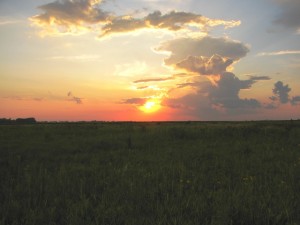
Thanks again to everyone at NC7!
Pssst! Wanna pollinate pumpkins?
I was cleaning out a mailbox the other day, and came across a message from Karl Haro von Mogel, who is quite well known around these parts. He was advising me that his new pollination video — on Cucurbits — had just been uploaded to YouTube. And I forgot to write about it. Apologies to Karl, but I’ll make it up in a minute.
The video is clearly aimed at the more industrial end of the spectrum. Bringing parent plants into a greenhouse was never an option for me. On the other hand, wandering through the pumpkin patch soon after dawn to gather ripe male flowers that had not quite opened was one of the great treats of saving my own seeds. And Karl deals with more than just controlled pollination. The first 3 1/2 minutes gives a good overview of cucurbit diversity, centres of origin and wild relatives. And near the end he reveals the secrets of the seedless watermelon. All in all, well worth 10 minutes of your life, even if you plan never to pollinate a pumpkin.
In his email Karl mentioned that he had entered the video for a competition at Chlorofilms. It was one of 17 2nd prize winners. So were some of his other films, including this one on pepper breeding.
Maybe if we could rustle up “at least $8000” in prize money we’d get some entries to our own competitions. Or maybe we should just enter the next Chlorofilms competition, if and when it happens.